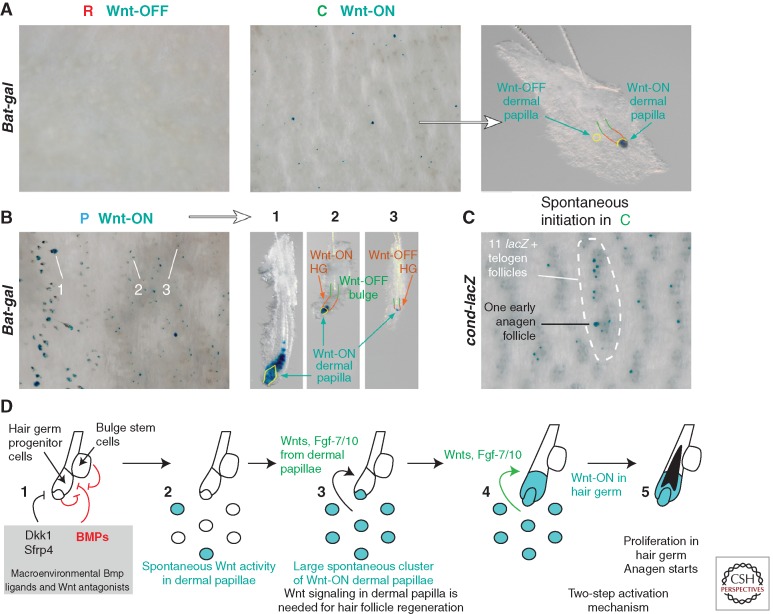Figure 3.
Stochastic and self-organizing regenerative behavior emerges in a population of cross-communicating hair follicles. (A–D) Activation of WNT pathway in DPs of telogen HFs precedes WNT activation in epithelial SCs and initiation of anagen. This early WNT signaling event in DPs occurs in competent, but not in refractory telogen HFs as visualized in BAT-gal and cond-lacZ WNT reporter mice (A). In competent telogen HFs, WNT activation in DPs occurs stochastically and leads to new anagen initiation only when at least five neighboring DPs have turned on WNT activity simultaneously (C). Nearly all telogen DPs in front of the anagen-spreading wave are WNT-active, which translates into 100% efficient telogen-to-anagen transition by the wave front HFs (B). WNT-active DPs were shown to produce secondary signaling factors such as Fgf-7 and Fgf-10 that facilitate activation of adjacent HF SCs and anagen initiation (D). The schematic drawing in (D) shows the unstable DP activation/stable hair bulge activation/regeneration of one HF/propagation to include the whole HF population. In this process, the random initiation of DP activation is transformed into stable HF activation and robust regenerative hair wave (from Plikus et al. 2011; reproduced, with permission, from the authors).

